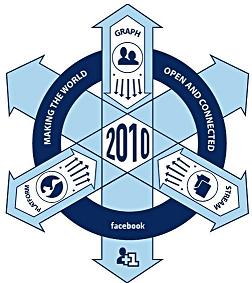
telecom Globalive
The Canadian government said Friday that it has approved a request from Egyptian-backed telecom Globalive Wireless Management Corp. to launch its mobile phone service in Canada.
It will be the fourth major wireless company serving Canada, competing with Rogers Communications Inc., BCE Inc. and Telus Corp.
Industry Minister Tony Clement said the federal cabinet has determined Globalive meets Canadian ownership requirements, reversing an earlier ruling by the country’s federal telecom regulator.
“Now we’re ready for action,” Globalive CEO and Chairman Anthony Lacavera told cheering supporters in Toronto. “We could be launching as early as next week.”
“The objective is to have a few–quite a few–WIND Mobiles under your Christmas tree,” Ken Campbell, CEO of WIND Mobile, the brand name Globalive will operate under across Canada.
The Canadian Radio-Television and Telecommunications Commission had turned down Globalive’s request in October because it is majority funded and controlled by Egypt’s Orascom Telecom Holding, the Middle East’s largest telecommunications operator by market capitalization.
Orascom, which is controlled by Egyptian telecommunications mogul Naguib Sawiris, holds 65 percent of parent company Globalive Holdings, while Canadian entrepreneur and Globalive chairman Anthony Lacavera owns the rest. Orascom also holds much of Globalive’s debt.
But Clement said 80 percent of Globalive’s voting shares are held by Canadians and the wireless company, which is based in Toronto, should be considered Canadian.
“We came to the conclusion the lender had influence over the company, which is perfectly acceptable under our legislation, it did not have control over the company,” Clement said. “This variance is effective immediately allowing Globalive to enter the market without delay.”
Globalive’s arrival is expected to put pressure on consumer prices across the industry, as it heralds the entry of more players into the market opened up through an auction of wireless spectrum in 2008. The Organization for Economic Co-operation and Development’s annual Communications Outlook study, published in August, found that Canada has the third-highest wireless rates among developed countries after the United States and Spain.
In that auction, Globalive paid 442 million Canadian dollars ($419 million) for airwaves over which to operate and has invested millions more in its network and employees.
Globalive has already hired 800 employees and approximately half have already finished their training and are now doing paid volunteer work at organizations such as food banks, boys and girls groups, literacy groups and the Salvation Army.
The telecom regulator reviewed Globalive’s corporate structure last spring and decided its operations would contravene the Telecommunications Act that stipulated companies be controlled by Canadian interests. That decision flew in the face of an earlier review by Industry Canada that gave the company a license in the interest of promoting competition.
The Canadian government, wanting to spark more competition in the telecommunications business, reviewed the earlier ruling with input from the industry.
And Clement said last week that the federal cabinet has the power to overrule the telecommunications regulator and that Globalive was entitled to launch its own protest.
Clement stressed that Friday’s announcement was not giving Globalive special treatment.
“Let me state for the record, government is not removing, reducing, bending or creating an exception to Canadian ownership and control requirements in the telecommunications and broadcast industries,” he said.
Rogers Communications, BCE and Telus, which together control 95 percent of the Canadian market, lobbied to halt Globalive’s advances, saying Globalive was breaking the Telecom Act because it was under foreign control.
“It’s disappointing, as we think Globalive quite clearly does not meet the requirements for Canadian control,” said Bell Canada spokeswoman Jacqueline Michelis. “We’ll be taking a close look at the reasoning behind this decision.”
Michael Hennessy, senior vice president of Telus’s regulatory and government affairs, said the ruling “has established an enormous precedent going forward as to how people are supposed to interpret our Canadian ownership laws.”
“This could be enormous from airlines to banks to telecom to broadcasting,” he said.
But Rogers said competition is good for Canadian consumers.
“We’ve always thrived in a competitive environment and we’re ready to meet the competition head on,” said spokeswoman Odette Coleman.
Deloitte Canada analyst Duncan Stewart said the federal government wants more competition in the cell phone industry. Globalive is probably the new competitor that the established players fear the most, said Stewart.
Shares in the major telecoms dropped Friday in early trading on the Toronto Stock Exchange. Rogers shares fell 3.4 percent to 32.25 Canadian dollars, Bell Canada parent BCE’s stock was off 2.4 percent at 27.75 Canadian dollars and Telus stock slipped 1.7 percent to 33.10 Canadian dollars.
 Swisher also added that the picture on the jacket to remind him of illuminati symbol. While Gawker.com adding that the symbol was also presented on the face of the demon Beelzebub Jewish mythology. Zuckerberg himself have been known as a child of the family descended from Jewish-American couple, Edward and Karen Zuckerberg. Currently studying at the Harvard, the man who is now aged 26 years, also joined the Alpha Epsilon Pi, a Jewish fraternal organization.
Swisher also added that the picture on the jacket to remind him of illuminati symbol. While Gawker.com adding that the symbol was also presented on the face of the demon Beelzebub Jewish mythology. Zuckerberg himself have been known as a child of the family descended from Jewish-American couple, Edward and Karen Zuckerberg. Currently studying at the Harvard, the man who is now aged 26 years, also joined the Alpha Epsilon Pi, a Jewish fraternal organization.






